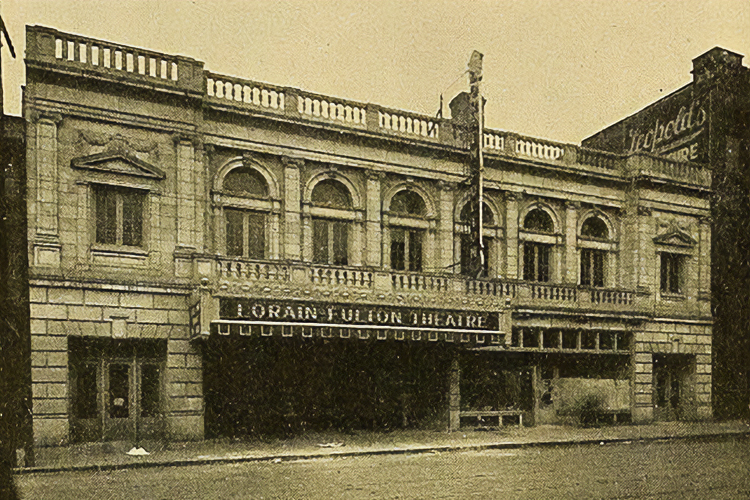
The Weizer Building: A 1928 testament to Cleveland’s Hungarian population in Buckeye
Henry Hradilek was born in 1886 in Moravia, Austria-Hungary, today a historic region of the Czech Republic. He came to Cleveland in the early 1900s and wasted no time designing industrial buildings, apartments, and homes from Edgewater and Tremont to Cleveland Heights.
There are two Cleveland buildings that still stand today that put Hradilek in the history books. One is his 1920s design of a grand space for entrepreneur Otto Poschke, who hired Hradilek to design a replacement for his Edgewater Beach barbeque shacks—today’s Don’s Lighthouse Grille.
The other is the 1928 Weiser Building at 11801 Buckeye Road in the Buckeye neighborhood.
Shortly after he arrived in Cleveland, Hradilek was designing two-story red brick apartment buildings in the Tremont neighborhood in 1914. He lived in Cleveland’s Edgewater neighborhood in 1918 when he was drafted during World War I, during which he served as a member of Company A 308 Engineers—stationed in France, where the Company was charged with repairing and maintaining bridges.
The Weizer Building exterior, ca. 2002The Henry Hradilek Company, housed in the 1904 Park Building in Public Square, was active from about 1913 until the early 1930s.
On either side of his military service, from 1914 to 1917 and then until 1928, Hradilek continued to design industrial buildings and in 1921 designed the former Lorain-Fulton Theater, 3409 Lorain Avenue in Lorain-Fulton Square, for John and Bertha Urbansky (it was demolished in 1962).
Hradilek also earned a reputation for his homes in Cleveland Heights—designing approximately 14 homes and apartments, some for repeat customers, along roads like Dartmour, Monmouth, Lamberton, and Derbyshire, among others.
In 1925, Hungarian immigrant and successful Cleveland entrepreneur John Weizer hired Hradilek to design a building on Buckeye Road in the heart of Cleveland’s growing Hungarian population to house his real estate offices.
Dubbed “American Debrecen,” after the second-largest city in Hungary at the time, the Buckeye area in the 1920s is said to have had the world’s fourth-largest Hungarian population (some legends say it was the second largest)—with 35,000 Hungarian residents living in the neighborhood’s total population of 40,000.
Hradilek designed a three-story, Beaux Arts style brick and terra cotta trapezoidal building for Weizer, and construction began in June 1925. The building was completed in September 1926.
The façade has arched transom windows along the third floor, capped by a single arch and filled with a lush floral motif. The arch over the third-floor windows of the main entrance features a winged eagle with the name “Weizer.”
The ground floor features a terracotta band, accents with rosettes, and a Greek Meander-style cornice.
The interior has plaster walls and ceilings with wood trim, columns and pillars throughout the structure, and wood floors.
The Weizer Building interior, ca. 2002Weizer, who came to Cleveland in the late 1860s, was a grocer and a garment maker before becoming a successful real estate broker. He reportedly sold more than 2,000 lots to Hungarian residents as the Buckeye population grew.
The first floor of the Weizer building originally housed a bank and shops on the first floor, Weizer's real estate offices and apartments on the second floor, and apartments on the third floor.
Most of the original interior work is still intact, with some alterations over the building’s 98 years—including the installation of a gymnasium on the first floor and the wood floors are now mostly overlayed with synthetic floors.
In 2002, the Weiser Building was named to the National Register of Historic Places.
Hradilek eventually lived in Bay Village before being hospitalized at U.S. Marine Hospital, where he died in 1938 at age 52 after a long illness.
The Weizer Building has been home to many businesses and organizations over the years, including a hardware store, a charter school, and, most recently, a behavioral health center. The building sat vacant for about six years until Providence House acquired it in 2019. The family preservation crisis nursery, which provides emergency shelter to children in families in crisis, is transforming the building to be its east side location.
Today, Cleveland’s Hungarian population is still vibrant and strong, with the Cleveland Hungarian Museum celebrating the culture’s heritage and Cleveland presence, although much of the presence in Buckeye has diminished.
 Cleveland Masterworks is sponsored by the Cleveland Restoration Society, celebrating 50 years of preserving Cleveland’s landmarks and cultural heritage. Cleveland Restoration Society preserves houses through the Heritage Home Program. Experience history by taking a journey on Cleveland’s African American Civil Rights Trail.Become a member today!
Cleveland Masterworks is sponsored by the Cleveland Restoration Society, celebrating 50 years of preserving Cleveland’s landmarks and cultural heritage. Cleveland Restoration Society preserves houses through the Heritage Home Program. Experience history by taking a journey on Cleveland’s African American Civil Rights Trail.Become a member today!


